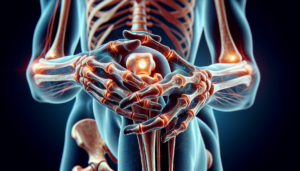The Role of Exercise in Blood Pressure Control
The Role of Exercise in Blood Pressure Control
Understanding Blood Pressure
Blood pressure (BP) is the force exerted by circulating blood on the walls of blood vessels. It is measured using two numbers: systolic (the pressure during heartbeats) and diastolic (the pressure between heartbeats). Normal blood pressure is considered to be around 120/80 mmHg. Hypertension, or high blood pressure, is diagnosed when readings consistently exceed 130/80 mmHg.
Understanding the importance of controlling blood pressure can help prevent serious health issues, including heart disease, stroke, and kidney failure. Lifestyle changes, including diet and exercise, are crucial for managing blood pressure levels effectively.
The Physiology of Blood Pressure Regulation
To appreciate how exercise impacts blood pressure, it’s essential to understand the physiological mechanisms involved in blood pressure regulation. Blood pressure is influenced by several factors, including cardiac output, blood volume, and vascular resistance.
When the heart pumps blood, the amount of blood ejected with each heartbeat contributes to cardiac output. Blood vessel elasticity and diameter significantly affect vascular resistance. With physical activity, the demand for oxygen increases, leading to enhanced perfusion and improved blood flow, which subsequently impacts blood pressure regulation.
The Impact of Exercise on Blood Pressure
Immediate Effects
When engaging in physical activity, the body requires more oxygen and nutrients, which results in an increase in heart rate and blood flow. This temporary spike in blood pressure during exercise is normal and expected. However, post-exercise, blood pressure typically decreases as the body recovers, often resulting in lower blood pressure levels than before the activity.
Long-term Effects
Regular exercise induces changes in the cardiovascular system, promoting overall heart health and leading to long-term reductions in resting blood pressure. Studies indicate that consistent aerobic exercise can lower systolic blood pressure by 5 to 10 mmHg in individuals with hypertension.
The mechanisms behind these long-term benefits include:
-
Vascular Adaptations: Exercise stimulates the production of nitric oxide (NO), a molecule that helps dilate blood vessels, thereby reducing vascular resistance and stress on the heart.
-
Weight Management: Regular activity aids in weight control, which is crucial because excess weight is a significant risk factor for hypertension.
- Sympathetic Nervous System Regulation: Exercise can lead to improved autonomic nervous system function, decreasing the heightened activity of the sympathetic nervous system often observed in hypertensive individuals.
Types of Exercise Beneficial for Blood Pressure Control
-
Aerobic Exercise: Activities such as walking, jogging, cycling, and swimming are effective in improving cardiovascular health. A recommended guideline is at least 150 minutes of moderate-intensity aerobic exercise per week.
-
Resistance Training: Weight lifting or bodyweight exercises help improve muscular strength and endurance. Incorporating resistance training at least twice a week can further enhance overall cardiovascular health.
- Flexibility and Balance Exercises: Although not directly linked to lowering blood pressure, activities like yoga and tai chi can help manage stress, promote relaxation, and improve mental well-being, indirectly contributing to better blood pressure control.
High-Intensity Interval Training (HIIT)
Recent studies have shown that high-intensity interval training can also be effective for blood pressure control. HIIT involves short bursts of intense exercise followed by rest or lower-intensity exercise. This type of training is shown to have beneficial effects on both systolic and diastolic blood pressure levels, often in a shorter duration than traditional steady-state exercise.
Personalizing the Exercise Program
Assessing Individual Needs
Before beginning any new exercise regimen, particularly for those with existing health conditions or elevated blood pressure, it’s crucial to consult with a healthcare provider or a certified fitness professional. Individualized exercise programs should consider factors such as:
-
Current Health Status: Assess any current medications, existing medical conditions, and previous exercise history.
-
Preferences: Personal interests and preferences can make it easier to stick to a routine.
- Motivation: Setting achievable goals maintains engagement and motivation.
Safety Considerations
While exercise is generally safe for most individuals, those with hypertension should be cautious about certain elements, including:
-
Intensity: It’s essential to start at a lower intensity, gradually increasing as fitness improves. Monitoring heart rate can ensure safe exercise levels.
-
Signs of Overexertion: Individuals should be aware of symptoms such as chest pain, dizziness, or extreme shortness of breath, and should stop exercising if they experience these symptoms.
- Environment: Choosing the right environment—such as cooler places to exercise outdoors in warm weather—can minimize risks related to heat and dehydration.
Additional Lifestyle Modifications to Complement Exercise
While regular physical activity is paramount in blood pressure control, other lifestyle modifications can enhance results considerably:
Diet
Adopting a heart-healthy diet is crucial for managing blood pressure. The DASH (Dietary Approaches to Stop Hypertension) diet is an excellent framework that emphasizes:
-
Fruits and Vegetables: Rich in potassium, which helps balance sodium levels.
-
Whole Grains: Offer fiber and support healthy blood vessels.
-
Lean Proteins: Sources like fish and poultry can replace saturated fats.
- Limited Sodium Intake: Reducing sodium consumption is directly linked to lower blood pressure.
Stress Management
Chronic stress can contribute to elevated blood pressure. Incorporating techniques such as mindfulness, meditation, and deep breathing can help mitigate stress levels. Balancing work and leisure and enjoying hobbies can also contribute to lower blood pressure.
Adequate Sleep
The relationship between sleep and blood pressure is often overlooked. Poor sleep quality and sleep disorders like sleep apnea can lead to hypertension. Prioritizing sleep and establishing good sleep hygiene practices is essential for overall health.
Monitoring and Tracking Progress
Regular monitoring of blood pressure is vital for assessing the effectiveness of any lifestyle changes. Individuals should:
-
Keep a Log: Documenting blood pressure readings can help identify patterns related to exercise, diet, and overall lifestyle changes.
- Utilize Technology: Fitness trackers and blood pressure monitors can provide valuable insights into lifestyle impacts on health.
Conclusion
Exercise plays a crucial role in the management and control of blood pressure. Understanding the interplay between physical activity and blood pressure regulation can empower individuals to take charge of their health. By incorporating a blend of aerobic exercise, resistance training, and lifestyle modifications, one can experience significant benefits that go beyond merely achieving a lower blood pressure reading. Engaging with healthcare providers and possibly working with fitness professionals can further enhance the effectiveness of an exercise regimen tailored to individual needs.








